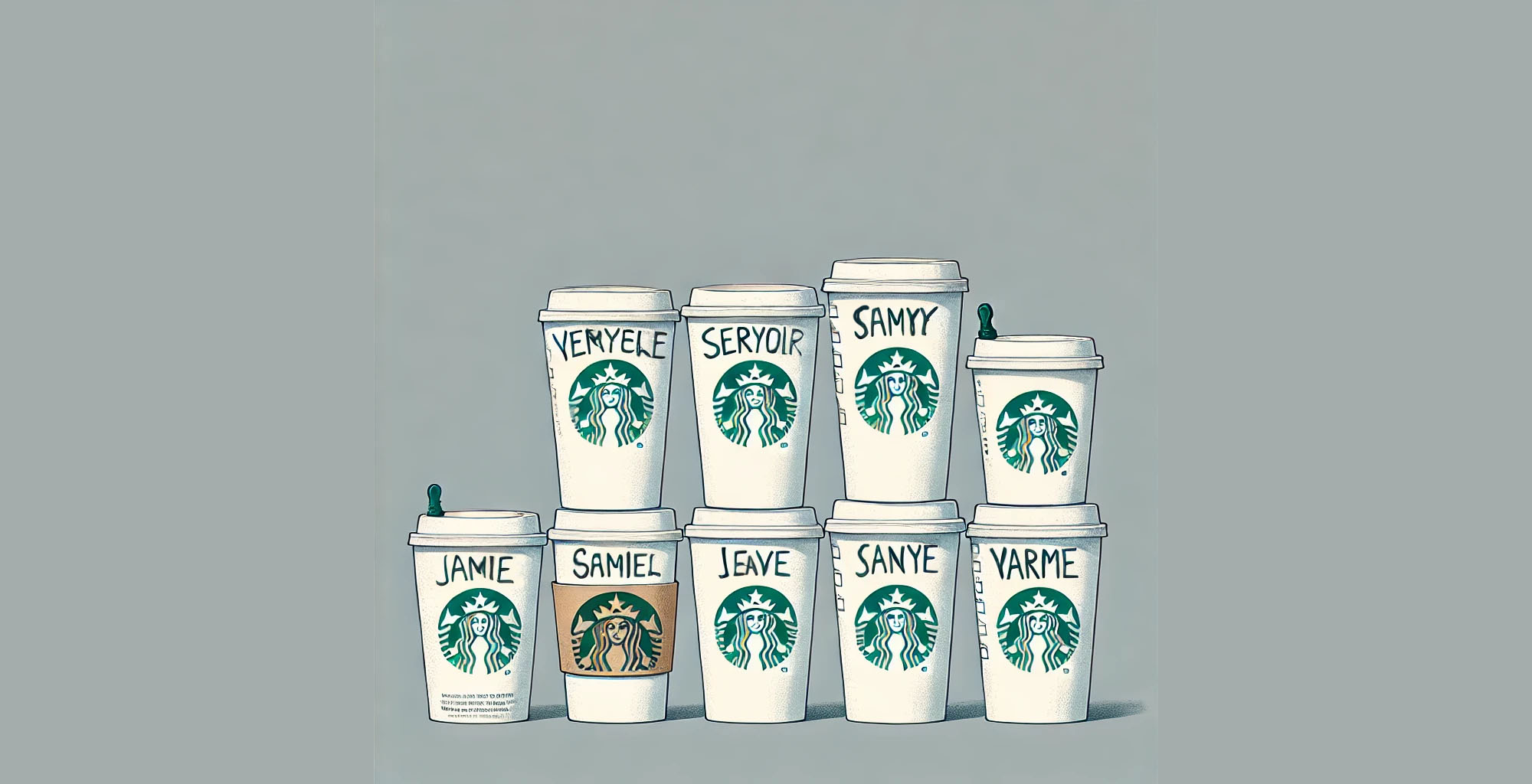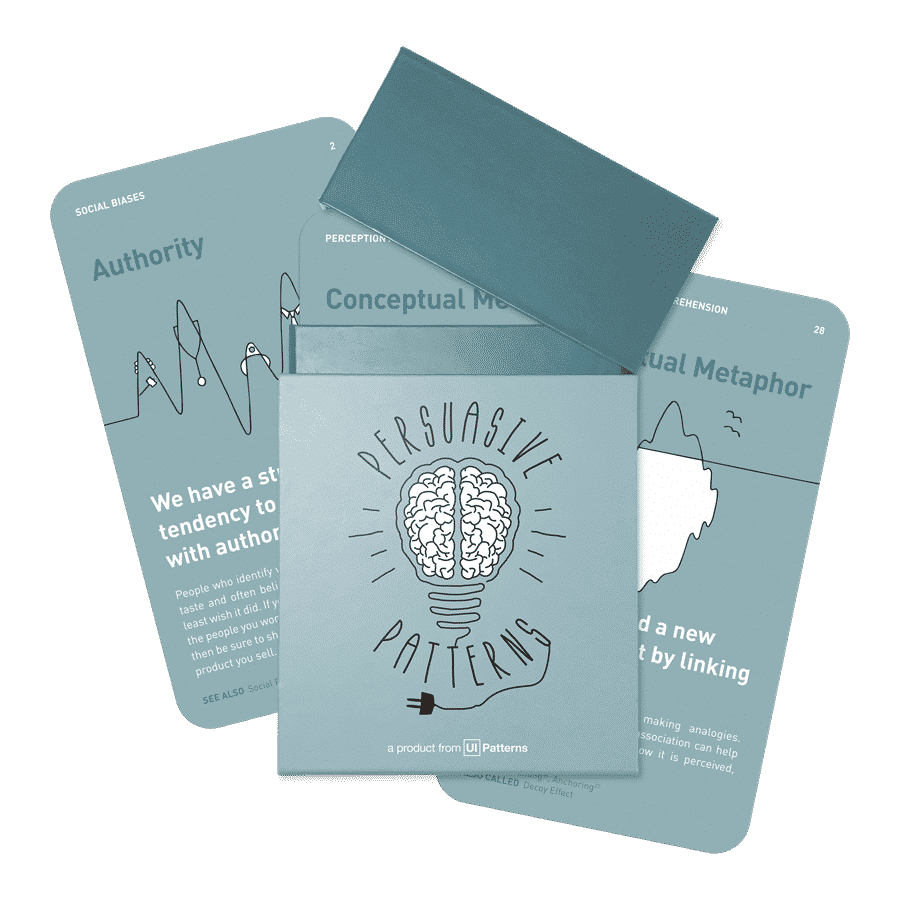The Starbucks Effect: The power of a name
How personalization increase customer satisfaction through name-based order identification.
Turn insights into action with the Persuasive Patterns card deck
Master the science behind user motivation and create products that drive behavior.
Get your deck!If you’ve ever been to Starbucks, you know that they always ask for your name when placing an order?. This gesture is more than just a friendly gesture – it’s a carefully calculated strategy rooted in psychological principles that drive customer satisfaction and loyalty.
A recent study by Lim et al. (2024) explored the impact of name-based order identification on customer satisfaction. Researchers conducted an experiment at a Cornell University coffee shop, comparing two common order tracking methods: names and numbers. The results were clear—customers overwhelmingly preferred having their orders identified by name.

Why does this work?
Several persuasive patterns help explain why using a customer’s name can have such a powerful effect on their experience, creating not only a sense of connection but also influencing behavior and perception.
-
Relational Norm and Social Proof We associate names with personal relationships. When a business uses our name, it taps into the Liking Bias, making us feel a subtle connection and familiarity. This creates trust and rapport, which can lead to greater loyalty. Additionally, when customers hear others’ names being called, it creates a sense of Social Proof. People feel more confident and comfortable when they see others receiving similar treatment, reinforcing the idea that using names signals quality service and fosters a welcoming environment. Seeing others have their names called confirms that the experience is personalized for everyone, increasing trust and participation.
-
Positive Transfer and Authority Bias The positive emotions we associate with hearing our own names—triggered by the Halo Effect – can transfer to the product or service. When a personalized experience makes us feel valued, it leads to increased satisfaction and status in the customer’s eyes. This can be enhanced further by Authority Bias: when customers see that a renowned brand like Starbucks, which holds strong authority in the coffee industry, is using a personalized approach, they are more likely to accept and appreciate this as a best practice. The authority of Starbucks reinforces the impact of the name-based experience, making customers feel more special and trusting the service as superior.
-
The Endowment Effect and Framing Effect Hearing our names fosters a sense of ownership over the experience, leveraging the Endowment Effect, where we place more value on things we feel personally connected to. This makes customers more likely to appreciate and cherish their order. But it doesn’t stop there. The Framing Effect plays a significant role in how customers perceive their experience. By framing the order process with a personalized touch (calling the customer by name), it seems more valuable and thoughtful than a simple number. This framing makes the overall experience feel more premium and personal, even though the service itself hasn’t changed.
-
Present Bias and Scarcity Bias Personalization through names taps into Present Bias, as it provides immediate gratification to customers. The act of hearing one’s name when the order is ready delivers an instant sense of recognition and value, which heightens customer satisfaction in the moment. Additionally, incorporating personalization can build a sense of exclusivity tied to Scarcity Bias—customers feel that a personalized experience is a limited resource. Not every establishment offers name-based order calling, which makes the experience at Starbucks feel special and unique, leading customers to cherish it more.
-
The Role of Commitment & Consistency When Starbucks regularly uses names for orders, it fosters Commitment & Consistency in their brand behavior, ensuring customers associate the brand with personalization. Once a customer is used to this personalized experience, they begin to expect it, creating consistency in their engagement with the brand. This consistency reinforces customer loyalty as people are drawn to experiences that maintain this level of personal connection over time. Furthermore, Commitment Devices like customer loyalty programs can build on this by associating name usage with ongoing rewards or recognition, further tying the personalized experience to long-term engagement.
The effect doesn’t work for everything
While the Starbucks effect is powerful, it’s not always appropriate for every business setting.
-
Privacy concerns and Risk Aversion Some customers may prefer to remain anonymous, particularly in sensitive or busy environments. Offering both name and number-based tracking can address concerns about Risk Aversion – where customers might feel uncomfortable with the exposure of their personal information. Giving customers the option to opt-in or remain anonymous empowers them to feel safe while still enjoying a high level of service.
-
The Robot Factor and Cognitive Dissonance Using names with automated systems can feel impersonal, potentially causing a disconnect. In these cases, consider using Tailoring techniques, such as offering unique order numbers or using initials to maintain personalization without discomfort. This helps avoid Cognitive Dissonance, where the customer’s expectation of personalization clashes with the robotic or automated system delivering it.
Extending the Starbucks Effect to ecommerce
The Starbucks effect isn’t limited to physical stores. You can apply similar principles to your ecommerce business, leveraging personalization to enhance customer experience.
-
Name the Customer’s Basket Instead of using a generic cart or basket, name it after the customer. For example, “John’s Order” or “Sarah’s Shopping Spree” taps into Value Attribution by making the customer feel more attached to their purchase. By giving customers a personalized cart, the experience feels more engaging and drives Commitment & Consistency as they progress through the purchase journey.
-
Personalize Email Communications Using the customer’s name in order confirmations, shipping updates, and marketing emails builds Commitment & Consistency, making the customer feel personally involved in the transaction. Personalization in communications also utilizes Priming, preparing the customer to feel more positively toward the brand and future interactions, especially when they see their name associated with exclusive offers or updates.
-
Offer Personalized Product Recommendations By analyzing customer data, you can offer personalized recommendations based on their interests and preferences. This speaks directly to Pattern Recognition, as customers will feel understood when they see products that match their tastes, strengthening their connection with the brand. It also builds Reciprocity, as customers may feel compelled to engage more when the company provides thoughtful, tailored suggestions based on past behavior.
Personalization goes beyond just using a name. Consider incorporating other strategies that create a personalized experience:
-
Tailored Product Recommendations Use customer data to suggest items based on their browsing behavior. This strategy leverages Priming by preparing customers for recommendations that feel relevant and timely.
-
Personalized Marketing Messages Create targeted campaigns based on behavior, demographics, or previous purchases. This approach taps into the Curiosity Effect, piquing the customer’s interest with tailored content.
-
Customizable Products Allow customers to personalize products with their names, initials, or unique preferences, enhancing their emotional investment in the product through the IKEA Effect – where customers place higher value on products they’ve customized or helped create.
Ready to personalize your own product experience?
The Starbucks effect is just one example of the many psychological principles that can influence user behavior. My **Persuasive Patterns card deck is packed with insights and actionable tips to help you design products that resonate with your audience.
- Lim, S., van Osselaer, S. M., Goodman, J. K., Fuchs, C., & Schreier, M. (2024). The Starbucks effect: When name-based order identification increases customers' store preference and service satisfaction. Journal of Retailing.
- Starbucks Effect by Nick Kolanda
- by Vejay Anand
- by Allison Lindsey at Mashed
